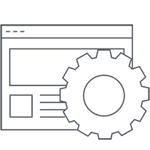Here’s everything you need to know to become an API testing expert. Impress your friends, colleagues, and relatives with your extensive API testing knowledge.
Application Programming Interfaces
APIs are defined as the method in which computers (servers and clients) and software applications talk to each other. If they don’t work properly, large portions of your website or application won’t work either. Many APIs are mission critical for your business and not testing them thoroughly is asking for trouble.
Planning an API Test

API testing requires an exhaustive test plan, just like any other type of software testing. A good test plan will mirror your specifications and other design documentation. Where the specs say that the API should function a specific way or take a specific action, the test plan should include all the ways the user can get the API to take that action or fail to do it.
A basic example is testing the API for logging into a user’s account. The design should specify the expected chain of events, as well as displaying any error messages. At a minimum, the test plan should have one test case with a user logging in correctly, another with a user entering a username and password that don’t match, a third with a username that doesn’t exist, and one where the password includes prohibited special characters.
The API you’re testing should be able to handle any unexpected behavior, so get creative and try to think of every possibility. Distracted end users can make the most unexpected mistakes. If you test for them and make sure that your APIs can handle those cases, you’ll minimize production problems – which is the whole point of testing in the first place.
Perform the API Test

When it comes to executing your API test plan, you’ll want an automated testing solution that covers all bases. Most automated API testing solutions will allow you to test your APIs in-house. Not all will let you test APIs against external users, which is critical. Load testing APIs with a tool such as LoadView ensures that your APIs will function properly under real world conditions.
LoadView can create thousands of virtual users coming to your website or application from all over the world. It tests the accuracy of the responses your APIs return, as well as how quickly the APIs perform under an increasing load curve.
API load testing is crucial because your users are impatient. If they have to wait too long for your APIs to log them in or add an item to their shopping cart, they’re going to give up and take their business elsewhere.
Monitoring your APIs

Once you’ve moved the new APIs into production, you’re going to need to monitor them to make sure that your system is up and running when it’s supposed to. Monitoring is really just regularly scheduled testing. Your automated testing tool should let you schedule ongoing tests for easy, automatic API monitoring.